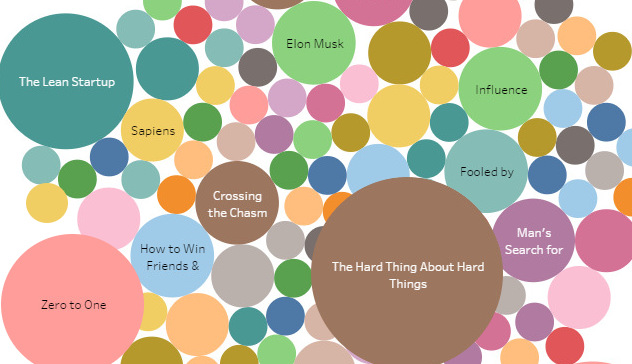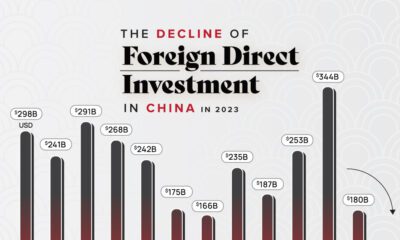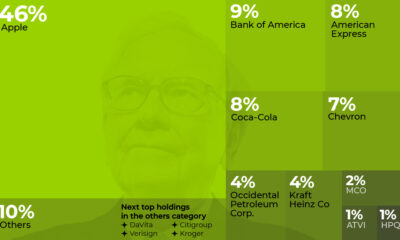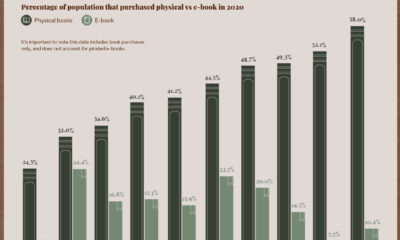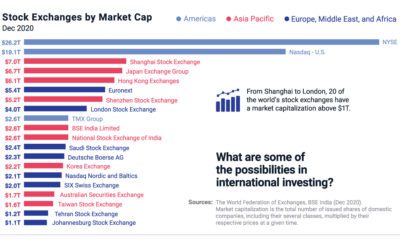Misc
The Most Prolific Investors in Startups Are Fans of These Books
The world’s most elite startup investors come in all shapes and sizes.
Some of them, such as Marc Andreessen or Josh Kopelman, come from an operating background as former entrepreneurs themselves. They know what it takes to build a great company, and they use that knowledge to try and spot the next Mark Zuckerberg or Evan Spiegel to place a bet on.
Other venture capitalists come at it from a more institutional angle. Mary Meeker, for example, spent a lot of time on Wall Street before making the move to Silicon Valley. She covered technology research for investment banks such as Salomon Brothers and Morgan Stanley, and helped lead famous IPOs for companies like Netscape and Google.
However, despite the differences in the backgrounds and approaches of top VCs, there does seem to be at least one commonality: they tend to be exceptionally well-read. Every new book helps arm them with knowledge, some of which could help give them the edge on their next deal or investment.
The favorite books of top startup investors
Joe Hovde, from the Ramen Profitable blog, collected data from the interviews of every venture capitalist and entrepreneur featured on the popular Twenty Minute VC podcast.
Each guest on the podcast is asked to provide a book recommendation, and Hovde has visualized this information.
The most cited authors include Ben Horowitz, Eric Ries, Nassim Taleb, and Peter Thiel
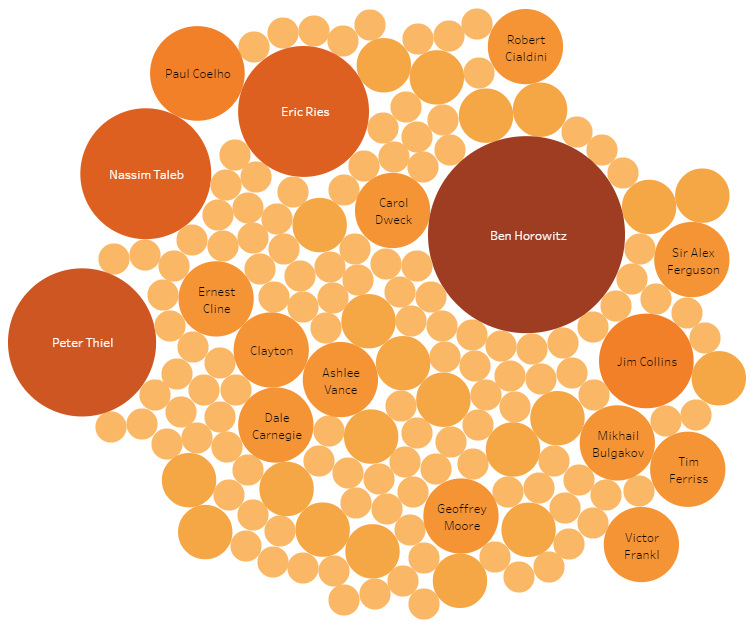
Ben Horowitz and Peter Thiel are fellow venture capitalists, while Eric Ries developed the “lean startup” methodology based on his experiences advising startups. Nassim Taleb is a mathematician, philosopher, and former trader that is best-known for popularizing the ideas of “black swans” and “antifragility”.
The most cited book overall is easily The Hard Things About Hard Things by Ben Horowitz
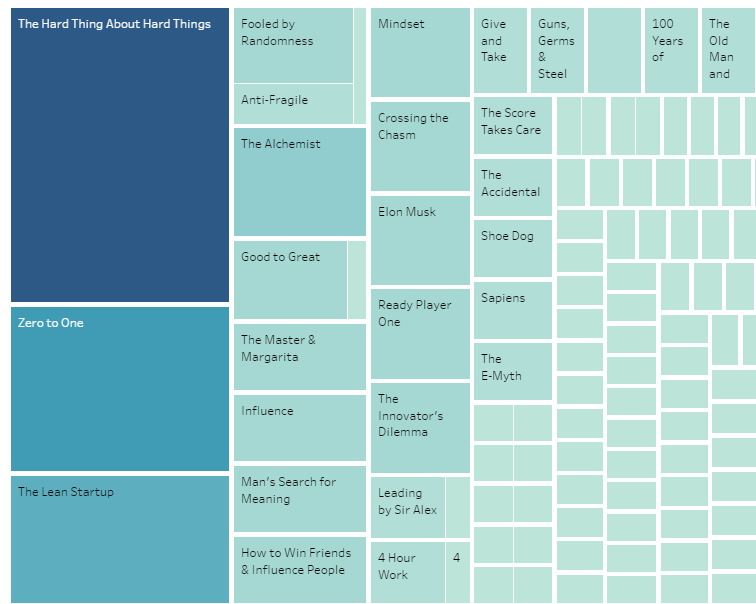
Ben Horowitz’s book The Hard Things About Hard Things covers Ben’s early trials and tribulations as a co-founder of Loudcloud, which almost imploded multiple times during the Dotcom Bust. Eventually the company pivoted to enterprise software and was sold to HP for $1.7 billion in 2007, proving to ultimately be a success. The book cuts right to the hard facts about entrepreneurship and building companies, relating back to the challenges faced in Ben’s previous endeavors.
The most popular non-fiction books also include Zero to One and The Lean Startup
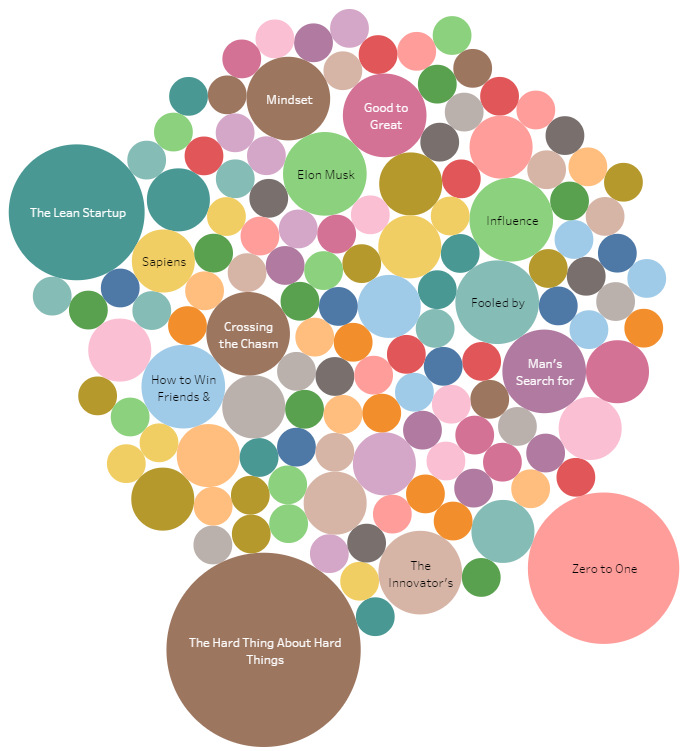
Other titles that got some love from VCs: Nassim Taleb’s Fooled by Randomness and Good to Great by Jim Collins.
The two most popular fiction titles are The Alchemist and The Master and Margarita
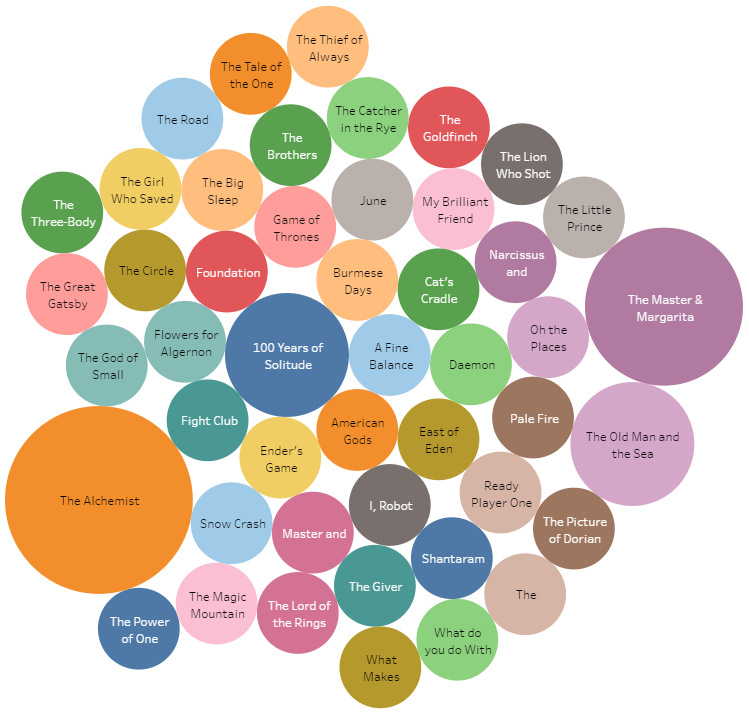
Paulo Coelho’s The Alchemist is considered a modern classic by many. It tells the story of Santiago, an Andalusian shepherd boy who one night dreams of a distant treasure in the Egyptian pyramids. He leaves Spain to pursue his dream, and discovers himself along the way.
The Master and Margarita, a novel by Russian writer Mikhail Bulgakov, is another modern masterpiece. Written during the darkest days of Stalin’s reign, it is a satirical take on the Soviet Union that uses a visit by the Devil as a literary vehicle to tell the tale.
What are the books that have influenced you the most?
Misc
How Hard Is It to Get Into an Ivy League School?
We detail the admission rates and average annual cost for Ivy League schools, as well as the median SAT scores required to be accepted.

How Hard Is It to Get Into an Ivy League School?
This was originally posted on our Voronoi app. Download the app for free on iOS or Android and discover incredible data-driven charts from a variety of trusted sources.
Ivy League institutions are renowned worldwide for their academic excellence and long-standing traditions. But how hard is it to get into one of the top universities in the U.S.?
In this graphic, we detail the admission rates and average annual cost for Ivy League schools, as well as the median SAT scores required to be accepted. The data comes from the National Center for Education Statistics and was compiled by 24/7 Wall St.
Note that “average annual cost” represents the net price a student pays after subtracting the average value of grants and/or scholarships received.
Harvard is the Most Selective
The SAT is a standardized test commonly used for college admissions in the United States. It’s taken by high school juniors and seniors to assess their readiness for college-level academic work.
When comparing SAT scores, Harvard and Dartmouth are among the most challenging universities to gain admission to. The median SAT scores for their students are 760 for reading and writing and 790 for math. Still, Harvard has half the admission rate (3.2%) compared to Dartmouth (6.4%).
| School | Admission rate (%) | SAT Score: Reading & Writing | SAT Score: Math | Avg Annual Cost* |
|---|---|---|---|---|
| Harvard University | 3.2 | 760 | 790 | $13,259 |
| Columbia University | 3.9 | 750 | 780 | $12,836 |
| Yale University | 4.6 | 760 | 780 | $16,341 |
| Brown University | 5.1 | 760 | 780 | $26,308 |
| Princeton University | 5.7 | 760 | 780 | $11,080 |
| Dartmouth College | 6.4 | 760 | 790 | $33,023 |
| University of Pennsylvania | 6.5 | 750 | 790 | $14,851 |
| Cornell University | 7.5 | 750 | 780 | $29,011 |
*Costs after receiving federal financial aid.
Additionally, Dartmouth has the highest average annual cost at $33,000. Princeton has the lowest at $11,100.
While student debt has surged in the United States in recent years, hitting $1.73 trillion in 2023, the worth of obtaining a degree from any of the schools listed surpasses mere academics. This is evidenced by the substantial incomes earned by former students.
Harvard grads, for example, have the highest average starting salary in the country, at $91,700.
-

 Real Estate2 weeks ago
Real Estate2 weeks agoVisualizing America’s Shortage of Affordable Homes
-

 Technology1 week ago
Technology1 week agoRanked: Semiconductor Companies by Industry Revenue Share
-

 Money1 week ago
Money1 week agoWhich States Have the Highest Minimum Wage in America?
-

 Real Estate1 week ago
Real Estate1 week agoRanked: The Most Valuable Housing Markets in America
-

 Business2 weeks ago
Business2 weeks agoCharted: Big Four Market Share by S&P 500 Audits
-

 AI2 weeks ago
AI2 weeks agoThe Stock Performance of U.S. Chipmakers So Far in 2024
-

 Misc2 weeks ago
Misc2 weeks agoAlmost Every EV Stock is Down After Q1 2024
-

 Money2 weeks ago
Money2 weeks agoWhere Does One U.S. Tax Dollar Go?

